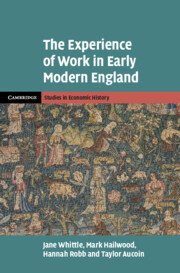Refine search
Actions for selected content:
213 results
7 - ‘There is only starting at the bottom’
-
- Book:
- Peasants to Paupers
- Published online:
- 24 December 2025
- Print publication:
- 29 January 2026, pp 205-225
-
- Chapter
-
- You have access
- Open access
- HTML
- Export citation
Chapter 3 - Improving the Fens
- from Part I - Scales of Action
-
- Book:
- Violent Waters
- Published online:
- 17 December 2025
- Print publication:
- 08 January 2026, pp 65-89
-
- Chapter
- Export citation
3 - Cadres
-
- Book:
- Cold War Comrades
- Published online:
- 25 December 2025
- Print publication:
- 08 January 2026, pp 116-155
-
- Chapter
- Export citation
The Icelandic Economic Collapse: How to Overcome Constraints Associated With Smallness?
- Part of
-
- Journal:
- European Political Science / Volume 12 / Issue 3 / September 2013
- Published online by Cambridge University Press:
- 01 January 2026, pp. 320-332
-
- Article
- Export citation

The State, the Law, and the People in the Roman Empire
- A Sourcebook
-
- Published online:
- 11 December 2025
- Print publication:
- 11 December 2025
Chapter 4 - Economic Life
-
- Book:
- The State, the Law, and the People in the Roman Empire
- Published online:
- 11 December 2025
- Print publication:
- 11 December 2025, pp 174-228
-
- Chapter
- Export citation
Public satisfaction with democracy: the role of the economy and political institutions
-
- Journal:
- European Political Science Review , First View
- Published online by Cambridge University Press:
- 05 December 2025, pp. 1-21
-
- Article
-
- You have access
- Open access
- HTML
- Export citation
When hospitals came to Sweden in the eighteenth century: a foreign import with practical difficulties
-
- Journal:
- Medical History , First View
- Published online by Cambridge University Press:
- 05 December 2025, pp. 1-18
-
- Article
-
- You have access
- Open access
- HTML
- Export citation
Approaching Connectivity and Community Through Rural Crafts in Early Roman Cambridgeshire: The Case of the Lower Ouse Valley Potteries
-
- Journal:
- Britannia , First View
- Published online by Cambridge University Press:
- 07 November 2025, pp. 1-35
-
- Article
- Export citation
6 - A Popular Mobilization and Egypt’s Counterrevolution
-
- Book:
- Return of Tyranny
- Published online:
- 17 September 2025
- Print publication:
- 23 October 2025, pp 170-202
-
- Chapter
- Export citation
7 - Language, Law and Religion
-
-
- Book:
- Palmyra, the Mediterranean and Beyond
- Published online:
- 21 October 2025
- Print publication:
- 16 October 2025, pp 141-166
-
- Chapter
- Export citation
29 - Functional Accounts of Change
- from Part IV - Modelling the Record: Methods and Theories
-
-
- Book:
- The New Cambridge History of the English Language
- Published online:
- 18 October 2025
- Print publication:
- 16 October 2025, pp 718-743
-
- Chapter
- Export citation
Economic Change in the Mediterranean between the Principate and Late Antiquity
-
- Journal:
- European Journal of Archaeology , First View
- Published online by Cambridge University Press:
- 29 September 2025, pp. 1-18
-
- Article
-
- You have access
- Open access
- HTML
- Export citation
The enriched knowledge economy: Ecomusées, regional development and French anthropology, 1960–1980
-
- Journal:
- Science in Context , First View
- Published online by Cambridge University Press:
- 29 September 2025, pp. 1-19
-
- Article
-
- You have access
- Open access
- HTML
- Export citation

The Experience of Work in Early Modern England
-
- Published online:
- 19 September 2025
- Print publication:
- 09 October 2025
-
- Book
-
- You have access
- Open access
- Export citation
1 - Reconsidering Disaster Risk
-
- Book:
- Legacy in the Landscape
- Published online:
- 11 November 2025
- Print publication:
- 11 September 2025, pp 1-12
-
- Chapter
- Export citation
Design framework for circular and sustainable packaging design
-
- Journal:
- Proceedings of the Design Society / Volume 5 / August 2025
- Published online by Cambridge University Press:
- 27 August 2025, pp. 1175-1184
-
- Article
-
- You have access
- Open access
- HTML
- Export citation
Chapter 1 - Forming the Kingdom of Alania, c.800–880
-
- Book:
- The North Caucasian Kingdom of Alania, 850–1240
- Published online:
- 17 December 2025
- Print publication:
- 21 August 2025, pp 41-88
-
- Chapter
- Export citation
Money and Mid-Republican Rome
-
- Journal:
- The Journal of Roman Studies , First View
- Published online by Cambridge University Press:
- 08 August 2025, pp. 1-25
-
- Article
-
- You have access
- Open access
- HTML
- Export citation
